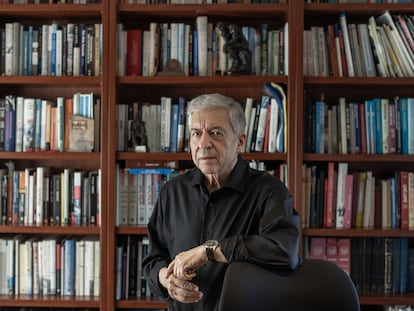Palestine-Israel: How did we get to where we are today?
On October 7, a brutal attack by Hamas killed an estimated 1,200 Israelis. Retaliation came swiftly, and thousands of Palestinians have now been killed in the Gaza Strip. But this tragedy did not occur in a vacuum; it can only be understood through the lens of history, in the context of a conflict that dates back to the 19th century
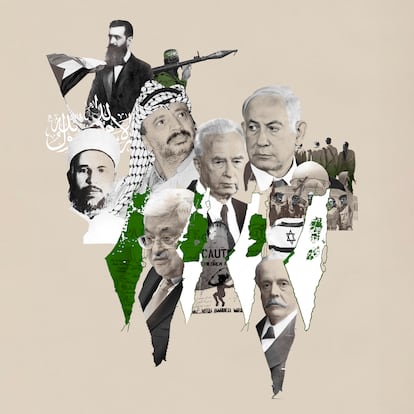
On October 24, 18 days into the war in Gaza, during a U.N. Security Council meeting in New York, Secretary-General António Guterres made a statement that caused a major diplomatic uproar. Guterres said that the surprise attack by Hamas on October 7, which resulted in the deaths of an estimated 1,200 Israelis, “did not happen in a vacuum,” but instead must be understood in the context of “56 years of suffocating occupation” inflicted on the Palestinian people. He was referring to the decades of violence endured by the Palestinian population in the West Bank and Gaza Strip since the eruption of the Six-Day War in 1967. While Guterres condemned the carnage perpetrated by the Islamic Resistance Movement (Hamas’s full name, translated to English) against the Israeli population — “the grievances of the Palestinian people cannot justify the appalling attacks by Hamas,” he said — the Secretary-General also drew focus to decades of Israeli occupation: “[Palestinians] have seen their land steadily devoured by settlements and plagued by violence, their economy stifled, their people displaced and their homes demolished.” His speech came as a painful shock to many in Israel and around the world, where major media tend to avoid contextualizing the Palestinian situation or addressing the question of Israeli occupation. Israel’s Minister of Foreign Affairs, Eli Cohen, who was in the room during the speech, rebuked Guterres: “Mr. Secretary-General, in what world do you live? Definitely this is not our world,” he said. Israel’s ambassador to the U.N., Gilad Erdan, demanded that the Secretary-General resign. Guterres had dared to mention the elephant in the room, denouncing a situation that Israeli dignitaries are not used to hearing Western leaders acknowledge, much less condemn.
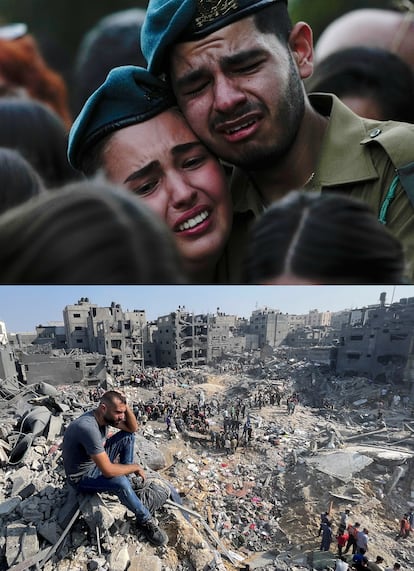
Guterres’ speech reflected an undeniable reality that has existed, out in the open, for decades, but which continues to be denied by the Israeli state. To understand the context for how we got to where we are today, we need to go back to the end of the 19th century, when Palestine was part of the Ottoman Empire and Europe was in the thralls Romanticism. It was against this background of romantic nationalism that an estimated 25,000 Jews, mostly Europeans from Russia and Romania, emigrated to Palestine during the so-called First Aliyah, from 1881 to 1903. (“Aliyah” is Hebrew for “ascent,” and refers to the immigration of Jews from the diaspora to the “Land of Israel,” otherwise known as the Southern Levant). At the time, there was already a small population of Jews living in Palestine, which was still under Ottoman rule. These Jewish inhabitants were not Zionists; that is, they did not seek to control the region and establish a majority-Jewish homeland — to the contrary, they had been living alongside Muslims and Christians for time immemorial.
Zionism sought to create a Jewish state in Palestine, and was very active at that time. Its central figure was the Austro-Hungarian political activist and journalist Theodor Herzl. Herzl was not the movement’s first ideologue — there were other proto-Zionist thinkers before him — but he was the most important, and is cited in Israel’s 1948 Declaration of Independence as “the spiritual father of the Jewish State.” In his early years, Herzl was what, at the time, was known as an assimilated, non-religious Jew, that is, a Jew who had been culturally integrated into the European-Christian environment. But then came a scandal that would shake the ground under Herzl’s feet and prompt him to rethink his belief in, and advocacy for, the mass conversion of Jews to Christianity: the Dreyfus affair. From that moment on, Herzl became a staunch supporter of the creation of a Jewish homeland, which would later be identified with the land known as Palestine.
The Dreyfus scandal broke out in France in 1894 and would have major repercussions for Jewish people across Europe. The French military captain Alfred Dreyfus, a Jew, was unjustly accused of spying for Germany and subsequent victimized by a judicial process plagued by anti-Semitism. Unlike Zionists, Herzl had not given much thought to “the Jewish question” prior to the Dreyfus trial, but from that point on, he would turn his attention to it. Herzl covered the Dreyfus case for a major Viennese newspaper and in the process, became a passionate Zionist. In his book, The Jewish State, published in 1896, he proposed the creation of an independent state that could welcome all the Jews of the world as citizens. This state would be founded on several ideals, including putting an end to the anti-Semitism that was spreading across the European continent. At first, the idea was rejected by Europe’s most influential Jewish leaders, who by and large thought that the solution to the so-called Jewish question was assimilation. But little by little, the idea began to take hold.
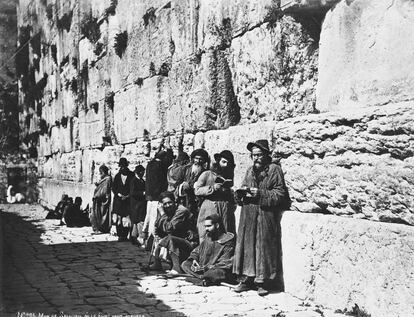


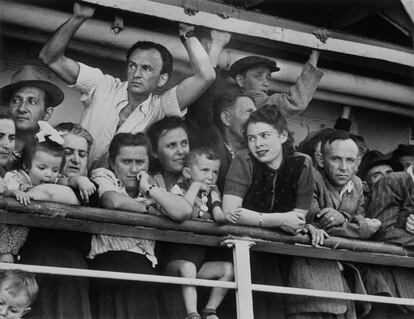
The trickle of migrants to Palestine continued almost without interruption, as history approached another Zionist milestone, perhaps the most decisive of all: the Balfour Declaration. This public letter was penned by the United Kingdom’s Foreign Secretary, Lord Arthur Balfour, at the height of the First World War in 1917, and sent to Lord Lionel Walter Rothschild, the leader of the Jewish community in Britain. The document was the result of a protracted effort on the part of Zionist leaders. A diplomat and member of Britain’s Jewish community, Lord Herbert Samuel, had pushed for such a declaration since the beginning of the Great War, when he foresaw the fall of the Ottoman Empire. He believed that the defeat of the empire would create the basic conditions necessary for the United Kingdom to take a position on the side of the Zionists, and against the Arab-Palestinians living in the area under British mandate. The declaration referred, for the first time, to the creation of a Jewish “national home,” a term that had no precedent in diplomatic language, but which was carefully chosen by both the British and the Zionists to open the way for the creation of a Jewish state in an area historically inhabited by Arabs, the vast majority of whom were Sunni Muslims. Paradoxically, a communiqué issue by the British government in 2017, on the occasion of the centenary of the Balfour Declaration, acknowledged that that original document should have safeguarded the political rights of the non-Jewish population, i.e., the Arab-Palestinians — something it did not do.
The reaction to the declaration on the part of the majority non-Jewish inhabitants of Palestine — Muslims and Christians comprised nearly 90% of the population at the time — was one of overwhelming rejection. As the American-Palestinian academic and literary critic Edward Said would latter argue, the Balfour Declaration was adopted by a Western power on behalf of a non-Western territory, and did not correspond to the wishes of the vast majority of the population. Naturally, it was clear to everyone involved that the Zionist project could only be implemented by force of arms. A communiqué signed shortly afterwards by a hundred or so notable figures from the local non-Jewish denominations in Palestine stated that, historically, Muslim and Christian Arabs had sympathized with the cause of the Jewish people, who had suffered persecution almost everywhere they had lived, but that they could not accept the proposal that Jews should rule over them.
As events unfolded, and it became clear that local communities could not stop the Zionist project from moving forward, given the support it enjoyed from the great powers, violence began to escalate, at different times and places, and with varying degrees of intensity. One of the more notable figures from this era was the Syrian Muslim preacher and anti-Zionist militant Izz al Din al-Qassam, who would die in 1935 but whose memory has endured to the present day, inspiring the name of the military wing of Hamas: the Izz ad-Din al-Qassam Brigades. The preacher Al-Qassam had studied at Cairo’s prestigious Al-Azhar University and acquired his legendary status fighting European colonial powers in the Middle East after the fall of the Ottoman Empire. He fought against the French in Syria, and following the defeat of the nationalist resistance, emigrated to Palestine to fight against the British and the Jews, where he would ultimately die at the hands of British police in 1935.
In May 1948, one day before the expiration of the British Mandate for Palestine, David Ben Gurion, in his capacity as head of the Jewish Agency, declared the establishment of a Jewish state that would adopt the name Israel. Ben Gurion’s declaration did not recognize any boundaries to that state outside of a vague reference to “Eretz Yisrael,” a concept since translated as “the Land of Israel.” Ben Gurion’s failure to delimit national borders reflected the desire of Zionist leaders to incorporate as much of the land of historic Palestine as possible into the Jewish state; shortly before the declaration of statehood, the United Nations had suggested the creation of two states, one Jewish and one Arab, with the former being granted slightly more than half of the territory, and with a shared international zone that would include the city of Jerusalem. The Arab countries, which rejected the U.N. proposal, sent troops to the newly created State of Israel to fight the Zionist paramilitary organization known as the Haganah. But these small and poorly disciplined Arab contingents were quickly defeated by the more efficient Israeli militias, which proceeded to occupy numerous territories that had been allocated to a future Arab state within historic Palestine by the U.N. partition plan.
Thus, the establishment of the Jewish State only a few years after the end of World War II and the Holocaust, took place in the context of an armed Arab-Israeli conflict during which Jews expelled Arabs from more than 750 Palestinian cities, towns and villages. Thus, the territorial distribution proposed by the U.N. soon became a dead letter; the Jews, better armed, better organized and more efficient, occupied most of the territory, leaving out of their new state only the West Bank and Gaza Strip — i.e. 22% of the historical territory of Palestine. Hundreds of thousands of Palestinians (an estimated 750,000 at minimum) were forced to leave their homes and flee as refugees to the West Bank, Gaza or neighboring countries, without ever being allowed to return. Today, there are an estimated seven million Palestinian refugees, when you include the descendants of the families expelled in 1948 — a population Israel does not want to hear about. When U.N. Secretary-General António Guterres said that we should bear in mind that the October 7 attack did not occur in a vacuum, he was undoubtedly referring to this historical context of settlement and dispossession.

Palestine
Israel/Jewish settlements
British Mandate
(1920-48)
UN Partition Plan
(1947)
Arab-Israeli War
(1948-49)
Oslo Accords
(1993)
West
Bank
Gaza
Strip
Israel

Palestine
Israel/Jewish settlements
British Mandate
(1920-48)
UN Partition Plan
(1947)
Arab-Israeli War
(1948-49)
Oslo Accords
(1993)
West
Bank
Gaza
Strip
Israel

Palestine
Israel/Jewish settlements
UN Partition Plan (1947)
British Mandate (1920-48)
Arab-Israeli War (1948-49)
Oslo Accords (1993)
West Bank
Gaza
Strip
Israel
During the 1967 Arab-Israeli War, also known as the Six-Day War, Israel defeated a coalition of enemy states comprised of Egypt, Syria, Jordan and Iraq. Within hours, it occupied the West Bank, Gaza, the Egyptian Sinai and the Syrian Golan Heights. The celebrated scientist and philosopher Yeshayahu Leibowitz, an orthodox Jewish public intellectual and Israel’s ethical, religious and political conscience, described the governance of the Palestinian territories following the war as a form of dehumanized, “Judeo-Nazi” military rule, and criticized the Zionist right, and certain segments of the Zionist left, for renouncing the humanist values of diasporic Judaism in favor of a new set of values subordinate to the demands of the State of Israel.
Gradually, the Israeli state facilitated the relocation of hundreds of thousands of Jewish settlers, many of whom were extremist Zionists, to the occupied territories, encouraging them with financial and economic incentives to settle in the colonies. These settlers now form part of a complicated and conflictual social web in which Israelis live in Palestinian towns and villages without having any relationship of trust with them. The situation has become very difficult to reverse, especially given that the Palestinian Authority, the governing body based in the city of Ramallah, some 20 kilometers north of Jerusalem, under the leadership of President Mahmoud Abbas, has become, in the eyes of many Palestinians, a mere extension of the Israeli government, dedicated to repressing dissident and persecuting Palestinians who resist occupation.


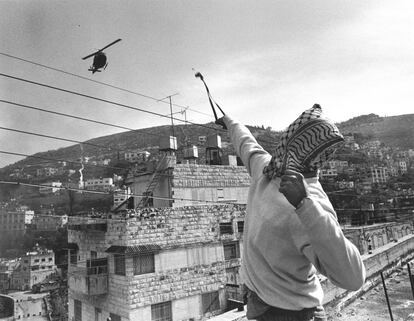
In 1973, a coalition of Arab states led by Egypt and Syria launched what would become known as the Yom Kippur War. After a few days of surprise attacks, the Israeli army recovered and managed to regain control over the territories that the Arabs had initially liberated. During the 20 days that the conflict lasted, 2,656 Israeli soldiers were killed — that is, more than double the number of Israelis who died in the October 7 Hamas attack, which left an estimated 1,200 dead in a single day, including more than 300 soldiers, according to official figures. But the 1973 war did not alter the policies of the Israeli government, which continued to send settlers to the West Bank, Gaza, the Golan and the Sinai. A few years later, Egyptian President Anwar al Sadat and Israeli Prime Minister Menachem Begin would sign an unexpected peace agreement. The Camp David Accords would see Egypt regain the Sinai and Israel walk away with the promise that there would be no repeat of the 1973 war. Relations between the two countries were normalized, although to this day, the peace remains a kind of cold and distant one — a resolution not accepted as legitimate by a large segment of the Egyptian population.
The occupation intensified, and in 1987, the First Intifada broke out. This series of successive Palestinian revolts — “intifada” is Arabic for “uprising” — lasted for several years. The occupied territories became a hotbed of protest, with an accompanying death toll. The outbreak of the First Intifada signaled another development that would mark the decades to come: the formation of Hamas. In those early years, Israeli authorities actually welcomed Hamas’s emergence, and made informal contacts with the group’s leaders in the hopes that the Islamists could be depoliticized and discouraged from participating in armed resistance. One of the politicians to encourage the growth of Hamas, in hopes of undermining the power Yasser Arafat’s Palestine Liberation Organization (PLO) within Western circles, was Shimon Peres. But Hamas soon emerged as a formidable guerilla force committed to armed struggle against the occupation, and with a more militant sense of determination than the PLO.
The resistance of the First Intifada played an undeniable role in encouraging the convening of the Madrid Conference in 1991 and the subsequent Oslo Accords in 1993. The Israeli Prime Minister at the time, Yitzhak Shamir, agreed to negotiations with the Palestinians and Arab countries with the intention of securing the $10 billion that the Americans had promised him in exchange for Israel taking in hundreds of thousands of Jewish immigrants from the Soviet Union. Within a few years, it finally seemed like a lasting peace was within reach, but this was merely a mirage, which ultimately disappeared with the assassination of Prime Minister Yitzhak Rabin on November 4, 1995. The assassination came as a major shock to the whole country. The assassin, Yigal Amir, was a young Jewish religious student and right-wing extremist who, according to the investigations, acted alone.
It remains unclear whether the late Rabin would have led the country to securing peace with the Palestinians and Syrians, though the impression at the time was that he would have, just as it remains unclear how far Prime Minister Ariel Sharon, who in 2005 pulled the army and settlers out of the Gaza Strip, would have gone if he had remained prime minister. The withdrawal of settlers from Gaza was a traumatic event for a large portion of Israeli society, even though it had become clear that their presence was creating a major burden on Israeli society and had led to the deaths of many settlers and soldiers. The Palestinian militias, especially Hamas’s Al-Qassam Brigades, carried out daring attacks against the army and the settlers on a daily basis, which was likely the primary reason that Sharon decided to disengage from the Strip. The prime minister died after suffering a stroke, and it remains unknown whether he would have expanded this policy of disengagement in the occupied West Bank.
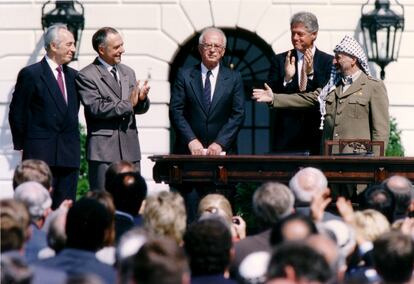
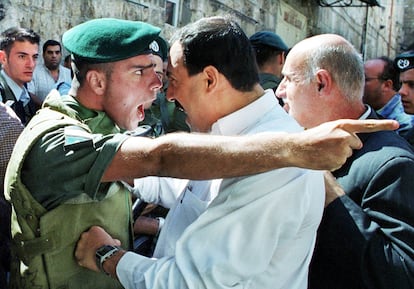
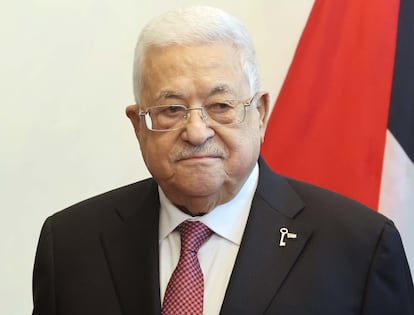


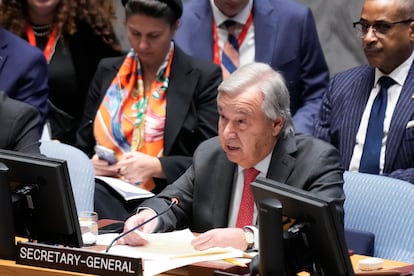

Benjamin Netanyahu has governed Israel for a significant part of the 21st century. With respect to the Palestinians, his policy has been to intensify the colonization of the West Bank and to keep Palestinians under a tight blockade in Gaza. The president of the West Bank-based Palestinian National Authority, Mahmoud Abbas, is seen by many as a Netanyahu collaborator doing the dirty work of cleansing the occupied territories of any vestige of resistance. After the October attacks by Hamas, Netanyahu has been struggling to keep his balance as he walks an increasingly thin tightrope.
One of the proposals for ending the conflict, which has gone on for decades, is what is known as the “two-state solution,” a plan for which Spain, among other countries, is a strong advocate. However, of the 193 member states of the United Nations, only 139 have recognized the State of Palestine. Neither the United States nor the major European countries are among them. In the midst of the current escalation of hostilities, it is worth remembering that in the past, moments of crisis have led to the signing of agreements. The Israelis participated in the Madrid Conference and the Oslo Accords as a result of the pressures of the First Intifada; they withdrew from the Gaza Strip under the pressures of the Second Intifada; and they left southern Lebanon in 2000 to put an end to the constant trickle of soldiers being killed by the Lebanese Shia militia Hezbollah. Perhaps the horrific tragedy that has unfolded since October 7 will compel certain leaders, and certain members of the international community, to engage in the self-reflection that so far this century, they have largely eschewed.
Sign up for our weekly newsletter to get more English-language news coverage from EL PAÍS USA Edition
Tu suscripción se está usando en otro dispositivo
¿Quieres añadir otro usuario a tu suscripción?
Si continúas leyendo en este dispositivo, no se podrá leer en el otro.
FlechaTu suscripción se está usando en otro dispositivo y solo puedes acceder a EL PAÍS desde un dispositivo a la vez.
Si quieres compartir tu cuenta, cambia tu suscripción a la modalidad Premium, así podrás añadir otro usuario. Cada uno accederá con su propia cuenta de email, lo que os permitirá personalizar vuestra experiencia en EL PAÍS.
¿Tienes una suscripción de empresa? Accede aquí para contratar más cuentas.
En el caso de no saber quién está usando tu cuenta, te recomendamos cambiar tu contraseña aquí.
Si decides continuar compartiendo tu cuenta, este mensaje se mostrará en tu dispositivo y en el de la otra persona que está usando tu cuenta de forma indefinida, afectando a tu experiencia de lectura. Puedes consultar aquí los términos y condiciones de la suscripción digital.
More information
Archived In
Últimas noticias
Most viewed
- Reinhard Genzel, Nobel laureate in physics: ‘One-minute videos will never give you the truth’
- Oona Chaplin: ‘I told James Cameron that I was living in a treehouse and starting a permaculture project with a friend’
- Pablo Escobar’s hippos: A serious environmental problem, 40 years on
- Charles Dubouloz, mountaineering star, retires at 36 with a farewell tour inspired by Walter Bonatti
- Why we lost the habit of sleeping in two segments and how that changed our sense of time
